Millions pause to watch rare solar eclipse in North America
About 180 million North Americans stopped what they were doing and looked skyward as the shadow of the moon blocked out the sun in a rare solar eclipse lasting an hour-and-a-half
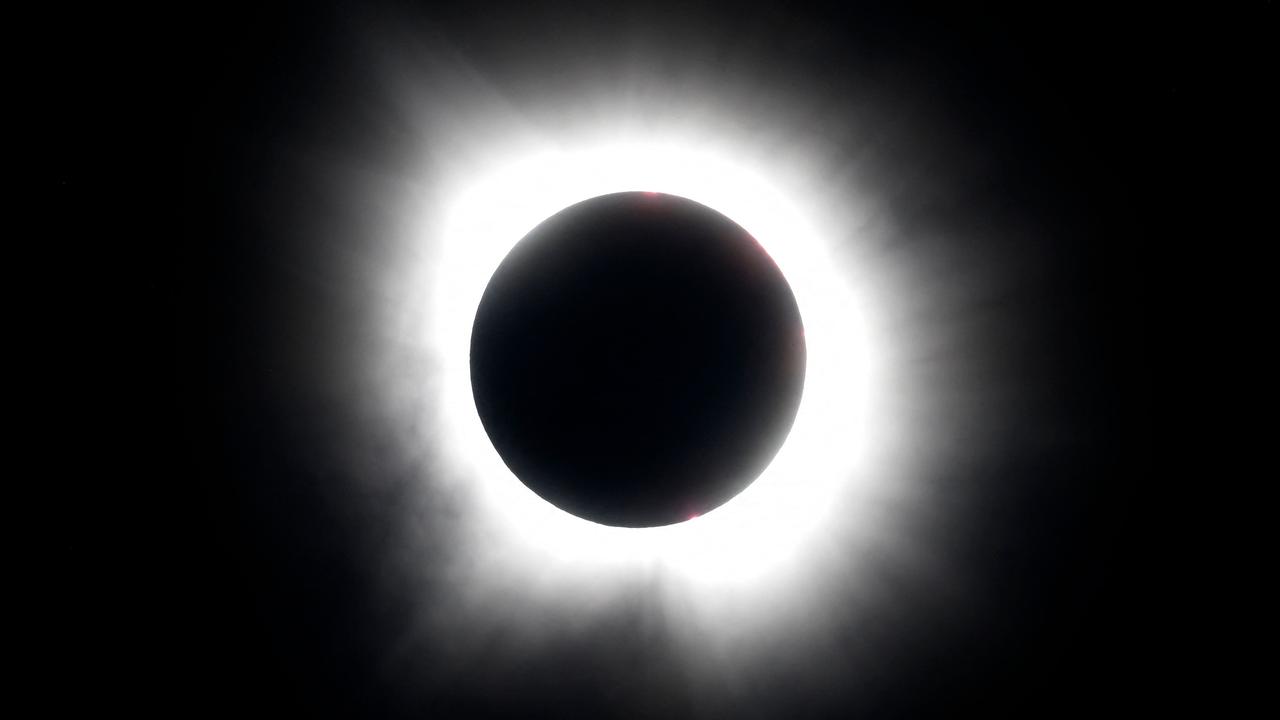
READING LEVEL: GREEN
Eclipse mania has taken over North America as millions across the United States, Mexico and Canada watched the moon’s shadow pass in front of the sun.
The rare event began on Mexico’s Pacific coast at 11.07am Monday local time (4am AEST), before travelling northeast across 15 states in the US and passing over Canada. The whole event took just under an hour-and-a-half.
Festivals, viewing parties, and even mass weddings were held along the eclipse “path of totality,” where the moon completely covers up the sun’s light for a few minutes.
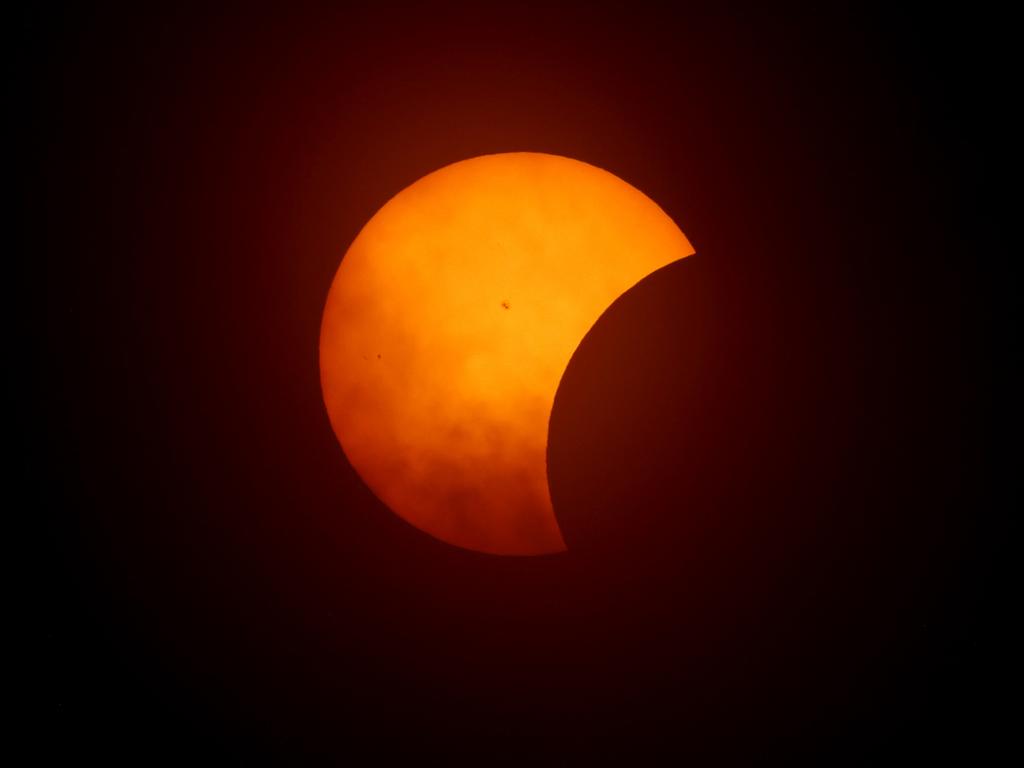

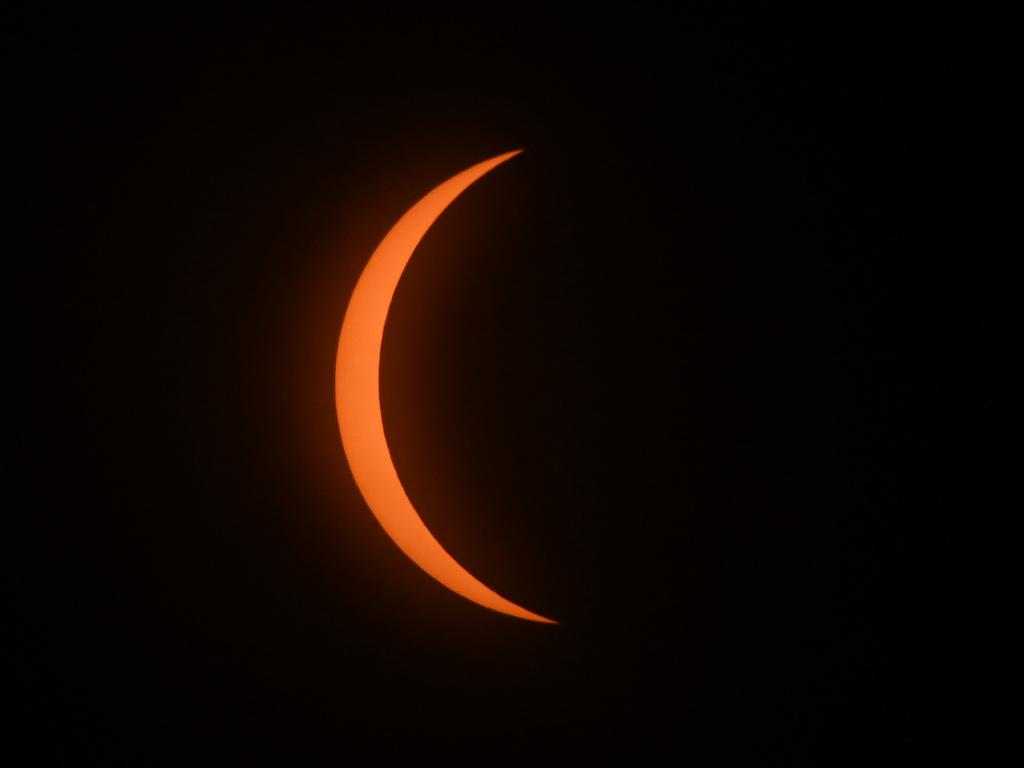
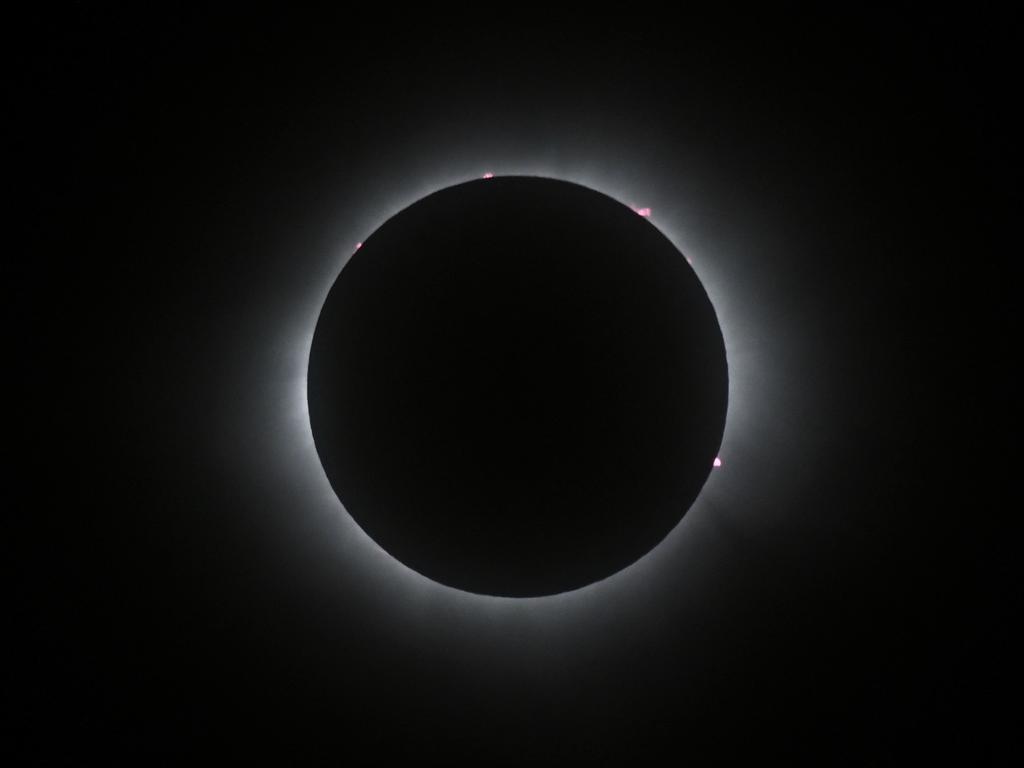
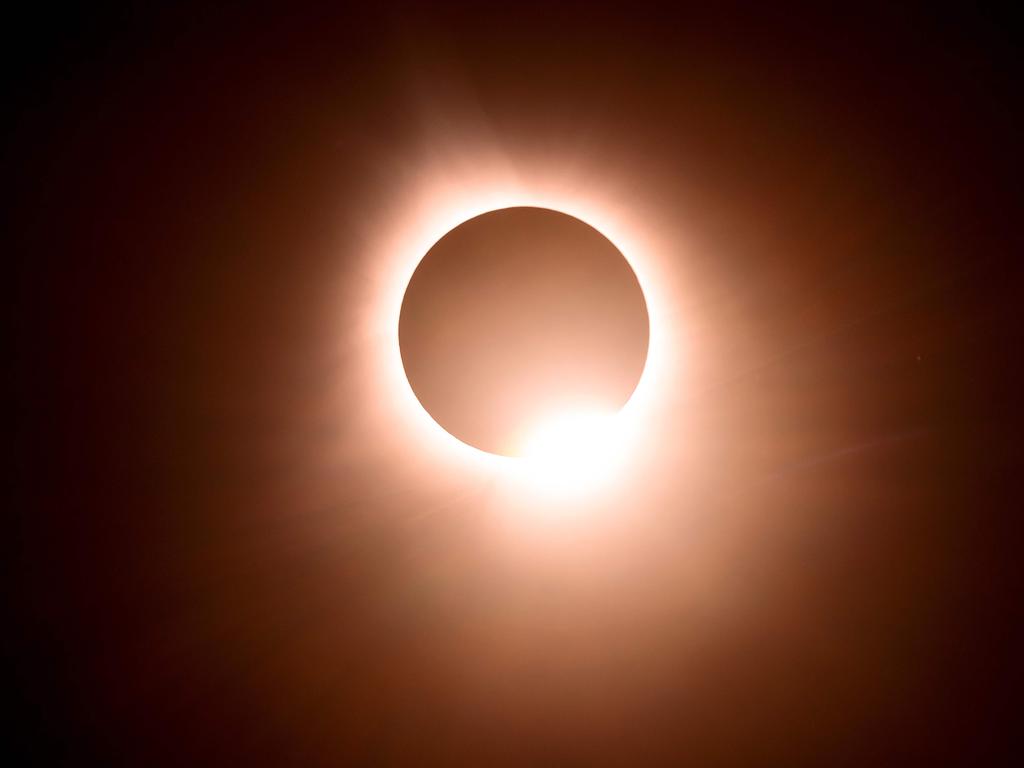
“A total solar eclipse is one of the most emotional events one can experience,” posted Jane Rigby, the senior project scientist for the Webb space telescope. “Feel your feels. You’re a part of the universe.”
This year’s path of totality was 185km wide and home to nearly 32 million Americans, with another 150 million people living within 320 km of the path.
Those further away could still enjoy a partial eclipse, or follow a webcast provided by NASA.
The next total solar eclipse that can be seen from a large part of North America won’t come around until 2044.

Australians can look forward to a total solar eclipse in 2028.
Businesses took advantage of the excitement by holding special events, while hotels and short-term rentals in regions where the eclipse could be seen best were booked out.
In the US city of Cleveland, where local officials expected some 200,000 visitors, the Rock & Roll Hall of Fame held a four-day “Solarfest” of live music.
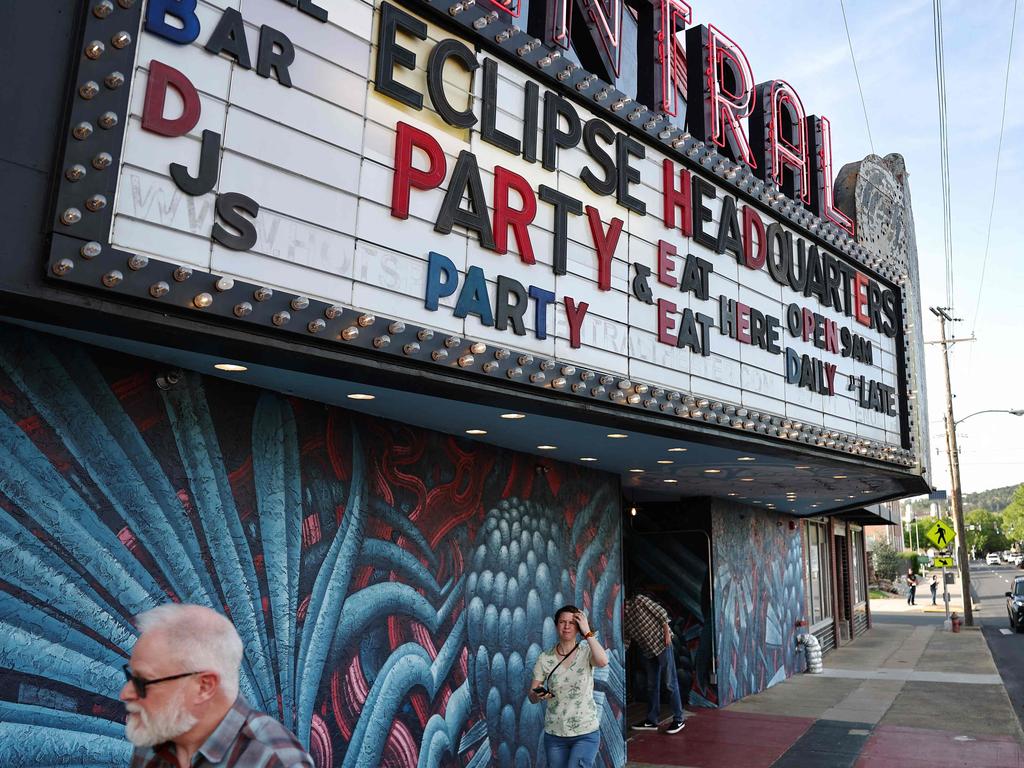
And in Russellville, Arkansas, more than 300 couples took part in a mass wedding ceremony with the “thin circle of light around the moon resembling a huge wedding ring in the sky!” the event’s website said.
Former US president Donald Trump, who famously risked the health of his eyes by gazing directly at the sun during a 2017 eclipse, released a new campaign ad featuring his larger-than-life head blocking out the sun.
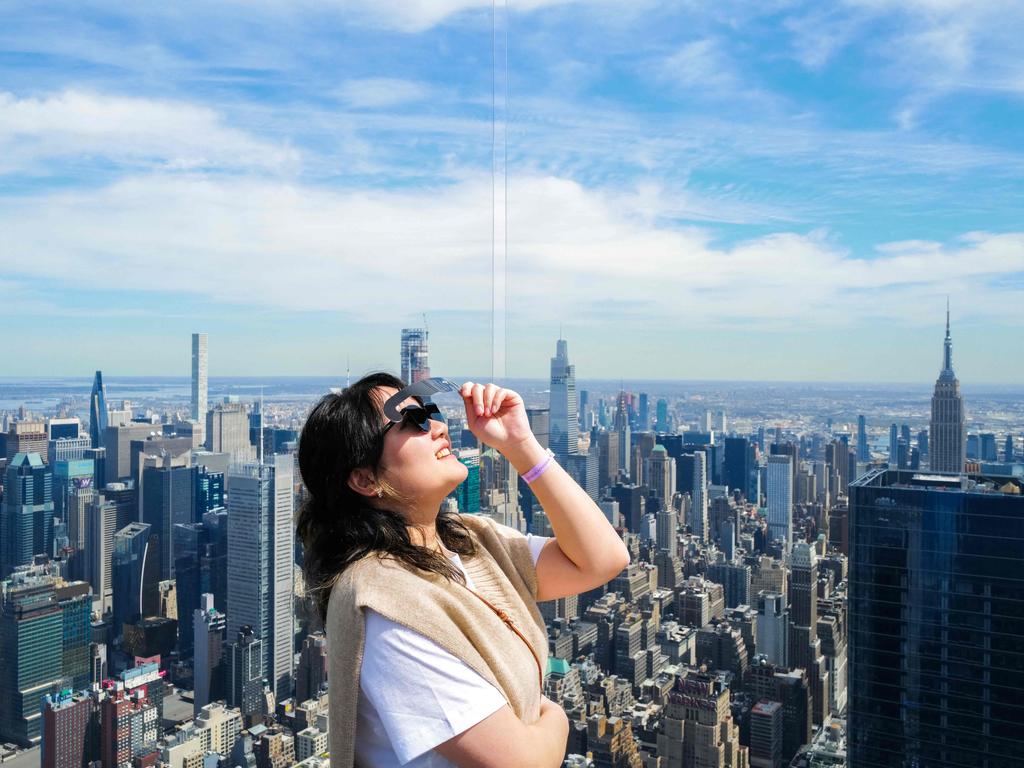
Health professionals have urged people not to follow Mr Trump’s example and to use certified eclipse glasses while watching the eclipse. Looking directly at the eclipse could permanently damage your retina, causing blurry vision or even some blindness.
Only those within the path of totality can safely remove their eye protection to see the sun’s outer layer peeking out from behind the shadow of the moon for a few moments.
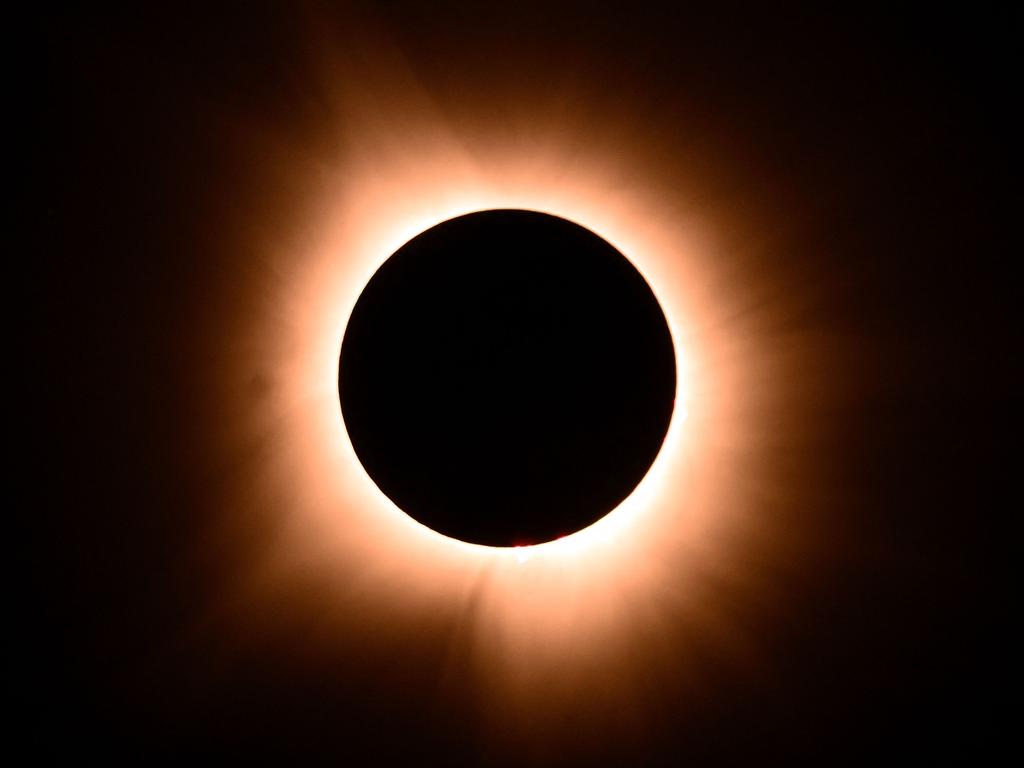
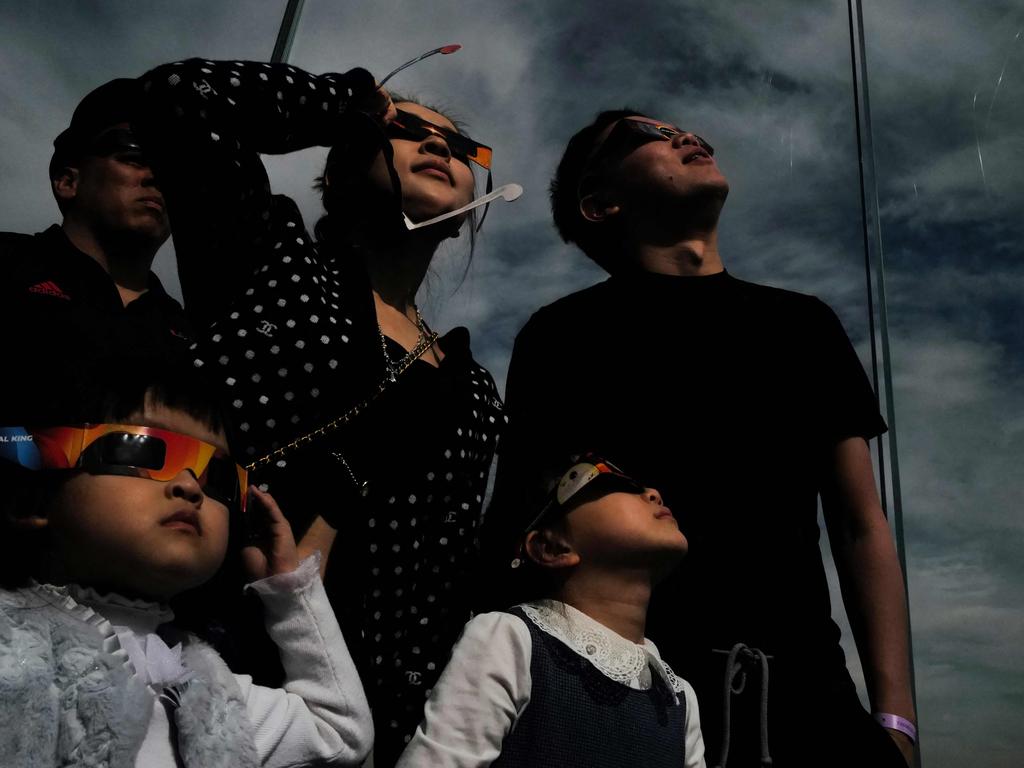
The eclipse was also used for scientific research.
NASA launched three sounding rockets before, during and just after the eclipse to measure changes caused by the sudden darkness to the ionosphere, an upper layer of the atmosphere used for long-distance radio communication.
Scientists used the eclipse to study the Sun’s corona, the outer layer of its atmosphere normally hidden by the blinding light of the sun’s surface.

Interesting animal behaviour has been observed during past eclipses. Giraffes have been seen galloping when the sky turns dark, while roosters and crickets can start crowing and chirping.
Ahead of the 2024 eclipse, NASA invited the public to add to its research by recording the sounds of nature as the moon’s shadow covered the sun.
Eclipses have been found to create a feeling of awe in humans, with people often coming together to bond after the event.
POLL
GLOSSARY
- mania: craziness or excitement
- path of totality: the area where the moon will fully block out the sun
- partial eclipse: when the moon passes between the earth and the sun but the three don’t line up perfectly, causing the sun to look like a crescent
- retina: a layer at the back of the eye that turns light into electrical signals, allowing you to see things
EXTRA READING
How do animals behave in an eclipse?
Saturn’s rings to disappear from view by 2025
Lucy zips past asteroid on way to Jupiter
QUICK QUIZ
1. How many North Americans were in the path of totality?
2. How long did the eclipse take?
3. When will the next solar eclipse happen in America?
4. When will the next solar eclipse happen in Australia?
5. Why do you need protective glasses to watch a solar eclipse?
LISTEN TO THIS STORY
CLASSROOM ACTIVITIES
1. A part of the universe
Why do you think a solar eclipse causes people to bond and feel “a part of the universe?”
What sort of event would you like to organise with friends to celebrate the 2028 solar eclipse in Australia?
Take into account your age, life events happening at that time and planning an event or party to take full advantage of the solar eclipse vibes.
Outline your party plan below;
2028 Solar Eclipse Event
Type of party:
Date & Time:
Venue:
Celebrating what:
Time: allow 30 minutes to complete this activity
Curriculum Links: English, Science, Personal and Social, Critical and Creative Thinking
2. Extension
Think of a slogan for a brand you know or a political party that is somehow linked to the US solar eclipse event. Share your slogan with your classmates and vote on the catchiest one.
Time: allow 15 minutes to complete this activity
Curriculum Links: English, Personal and Social, Critical and Creative Thinking
VCOP ACTIVITY
Read this!
A headline on an article – or a title on your text – should capture the attention of the audience, telling them to read this now. So choosing the perfect words for a headline or title is very important.
Create three new headlines for the events that took place in this article. Remember, what you write and how you write it will set the pace for the whole text, so make sure it matches.
Read out your headlines to a partner and discuss what the article will be about based on the headline you created. Discuss the tone and mood you set in just your few, short words. Does it do the article justice? Will it capture the audience’s attention the way you hoped? Would you want to read more?
Consider how a headline or title is similar to using short, sharp sentences throughout your text. They can be just as important as complex ones. Go through the last text you wrote and highlight any short, sharp sentences that capture the audience.

